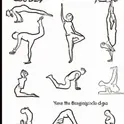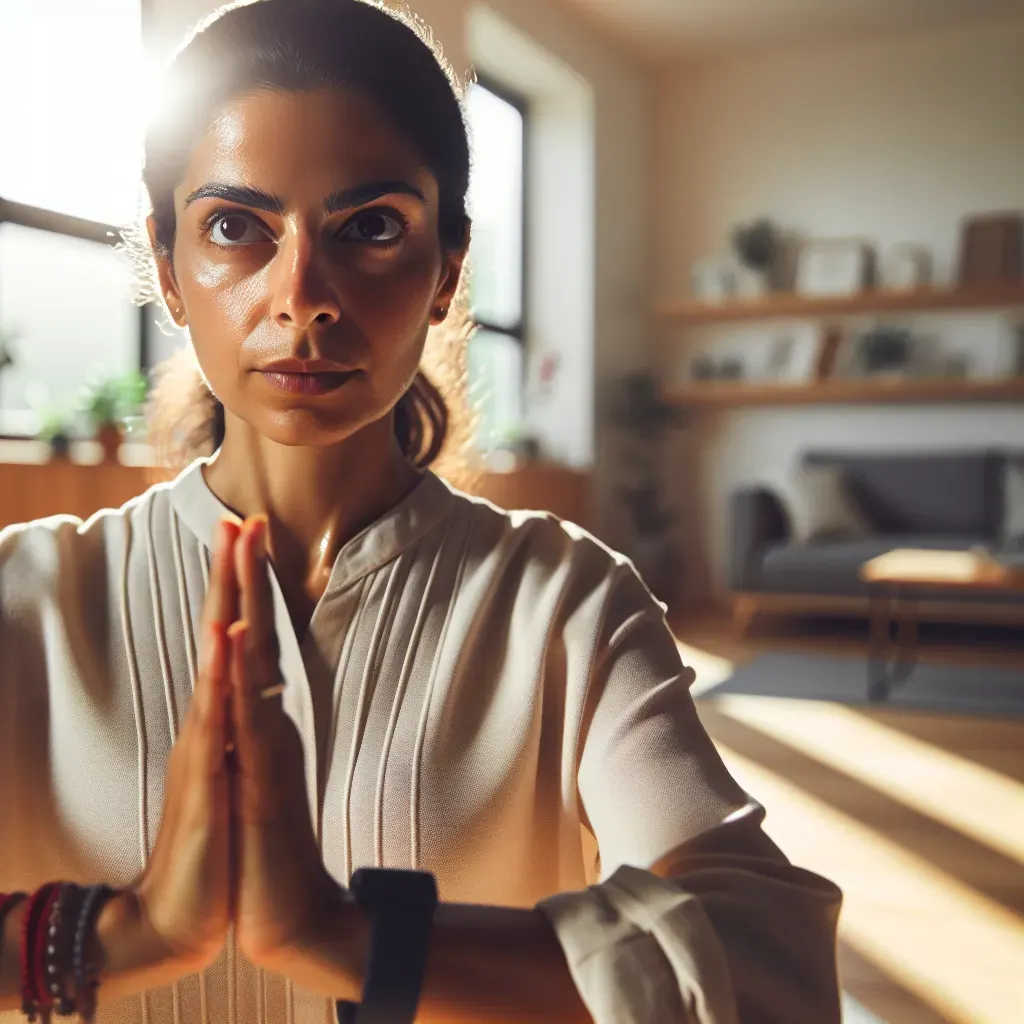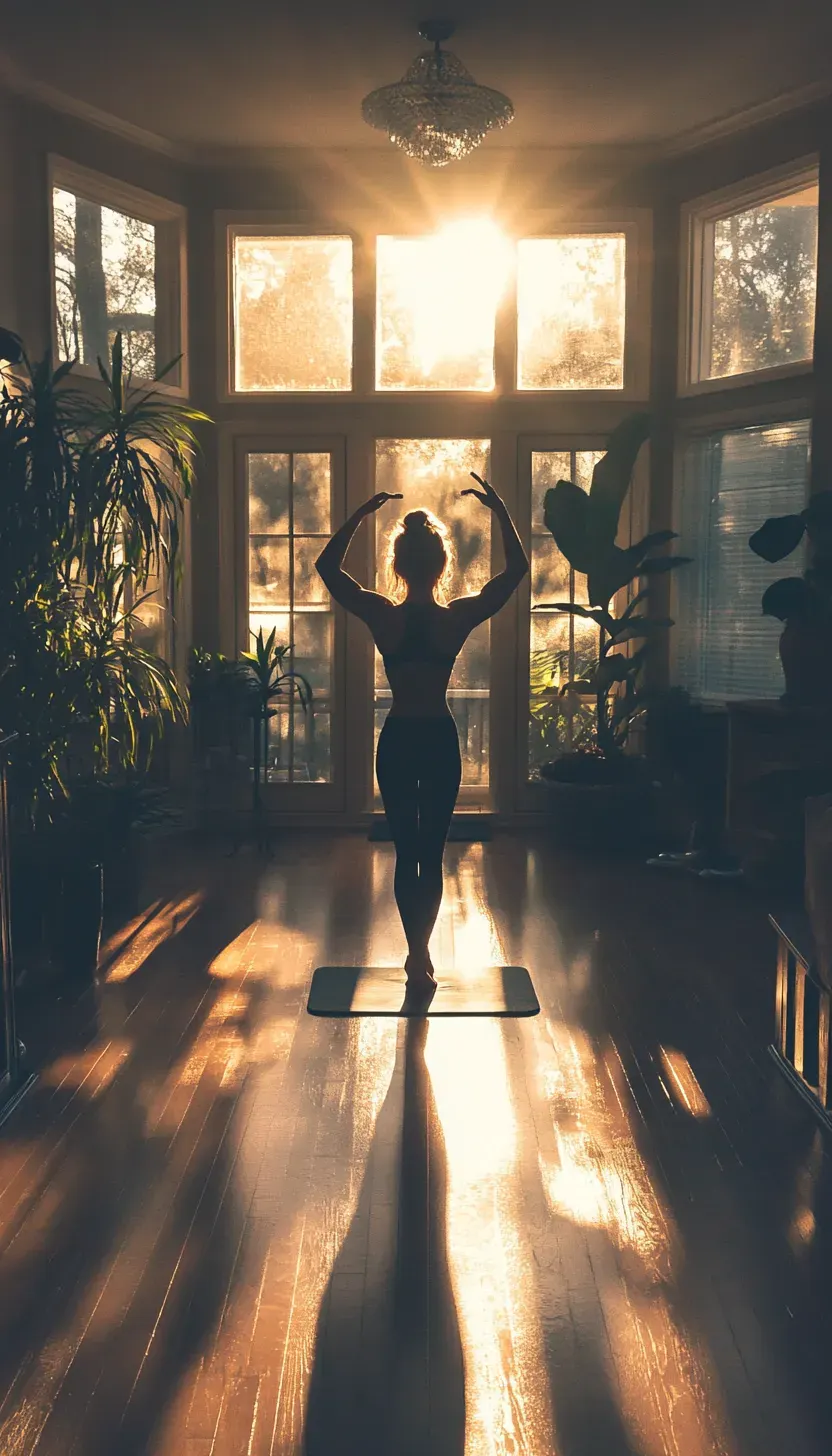Unlock The Magic: Boost Flexibility & Stability In Yoga
Table of Contents
Introduction
- The Journey to Flexibility and Stability
- The Transformative Power of Yoga
The Science Behind Flexibility and Stability in Yoga
- How Yoga Enhances Flexibility
- The Role of Muscle Engagement
- Understanding Stability in Yoga
Age and Flexibility
- At What Age Is It Hard to Be Flexible?
- How Aging Affects Flexibility
- Benefits of Starting Yoga at Any Age
Transforming Stiffness into Flexibility
- Can a Stiff Person Become Flexible?
- The Role of Consistent Practice
- Tips for Beginners
The Elongation Effect: Does Yoga Lengthen Your Body?
- Understanding Muscle Elongation
- Yoga Poses for Lengthening
- The Impact on Posture
Improving Flexibility and Strength through Yoga
- Dynamic and Static Stretching
- Styles of Yoga for Flexibility and Strength
- The Use of Props
Enhancing Stability with Yoga
- Core Muscle Engagement
- Proprioception and Balance
- Mindfulness and Concentration
Expected Timeline for Results
- How Long Does It Take to See the Benefits of Yoga?
- Unlocking Flexibility: Time and Patience
- Frequency and Duration of Practice
Personal Journey and Growth
- Embracing the Transformative Magic of Yoga
- Stories of Flexibility and Stability Achievements
- Encouragement and Motivation for Practitioners
Conclusion
- The Ongoing Journey of Flexibility and Stability
- The Holistic Benefits of Yoga Practice
Imagine a world where the body moves fluidly like a dancer's, where strength and grace intertwine seamlessly. This world is not a distant fantasy but an attainable reality through unlocking the magic of yoga.
By delving into the profound link between muscle engagement and enhanced flexibility in yoga, practitioners embark on a journey of self-discovery and transformation.
Yoga offers more than just physical poses – it provides a gateway to increased flexibility and stability through mindful movements. As we delve deeper into the benefits of holding yoga poses with intention, we uncover the secrets to cultivating unwavering stability amidst life's ebb and flow.
Join us as we explore how these foundational principles can elevate your practice from routine exercise to a transformative experience that transcends the boundaries of the mat.
Embark on this voyage towards holistic well-being, where each pose becomes a profound moment of connection with oneself. Let yoga guide you towards unlocking your body's innate potential for flexibility and strength, paving the way for newfound stability both on and off the mat.
Get ready to embrace the magic within you as we unravel the mysteries of muscular engagement for unparalleled growth in your yoga practice.
At What Age Is It Hard To Be Flexible?
Flexibility is a key component of yoga practice, and the perception that age alone determines flexibility can be misleading. While ageing may lead to natural changes in muscle elasticity and joint health, the belief that it becomes hard to maintain flexibility at a certain age is not entirely accurate.
Factors such as sedentary lifestyles, repetitive movements, injuries, and stress levels play significant roles in limiting flexibility regardless of age. Maintaining or even improving flexibility through mindful movement practices like yoga can help counteract the effects of ageing on the body's range of motion.
For individuals who have been less active or experienced decreased flexibility due to various reasons, starting a yoga practice at any age can offer an opportunity for gradual improvement.
Regardless of chronological age, consistent yogic exercises targeting stretching and strengthening can gradually enhance flexibility over time.
By focusing on alignment, breath awareness, and engaging specific muscle groups effectively during yoga poses, practitioners can work towards increased joint mobility and muscle suppleness regardless of their starting point.
There are countless stories of individuals who began their yoga journey later in life—some even in their senior years—and experienced noticeable improvements in flexibility and overall well-being.
Through dedication and patience with regular practice, many have discovered that the perceived limitations attributed to age when it comes to flexibility can be transcended. Yoga serves as a powerful tool not only for increasing physical suppleness but also for cultivating mental resilience and emotional balance at any stage of life.
Can A Stiff Person Become Flexible?
A stiff person can become flexible through consistent yoga practice. Flexibility is not exclusive to naturally bendy people; it can be cultivated and improved over time with dedication and patience.
Yoga provides an effective pathway for individuals with limited flexibility to progressively enhance their range of motion. By incorporating poses that target different muscle groups and gradually increasing the intensity of stretches, even the stiffest individuals can experience noticeable improvements in flexibility.
For instance, consider someone who struggles with touching their toes due to tight hamstrings.
Through a regular yoga practice focusing on hamstring stretches like Uttanasana (Standing Forward Fold) or Supta Padangusthasana (Reclining Hand-to-Big-Toe Pose), this individual can work towards loosening those muscles and eventually reach their toes comfortably.

It's essential for individuals starting on their flexibility journey to listen to their bodies, respect their current limitations, and avoid pushing themselves too far too soon, as this could lead to injury rather than progress.
By embracing a mindset of curiosity and perseverance, even the most inflexible person can witness significant changes in their body's mobility over time. The key lies in consistent effort, mindful movement, and a willingness to embrace the discomfort that often accompanies breaking through physical barriers.
Yoga serves as an inclusive practice open to practitioners at all levels, offering modifications and variations that cater to individual needs while fostering growth towards greater flexibility for everyone willing to embark on this transformative journey.
Does Yoga Lengthen Your Body?
Yoga is often referred to as a practice that not only strengthens the body but also lengthens it. While it may not physically stretch bones or increase height, yoga can help elongate the muscles and create space within the body, giving the appearance and sensation of added length.
As you engage in various yoga poses, you work on stretching and opening up tight areas, which can contribute to improved posture and a more streamlined physique.
Certain yoga styles like Hatha, Yin, and Restorative focus on holding stretches for longer periods, allowing the muscles to release tension gradually. These practices emphasize relaxation and deep breathing, facilitating muscle elongation.
Poses that target specific muscle groups such as hamstrings, hip flexors, and back muscles can aid in increasing overall flexibility and creating a sense of spaciousness within the body.

Imagine practising Utthita Trikonasana (Extended Triangle Pose) – as you reach one arm toward the sky while extending the other down towards the floor, you are actively engaging and lengthening your side body.
This combination of engagement and extension helps in both strengthening and elongating different muscle groups simultaneously. Through consistent practice, these lengthening effects become more pronounced, contributing to an overall sensation of increased height and freedom of movement.
How Can We Improve Flexibility And Strength Through Yogic Practices?
Yogic practices offer a holistic approach to enhancing both flexibility and strength simultaneously. Through the consistent practice of yoga poses, or asanas, individuals can gradually increase their range of motion while building lean muscle mass.
One key principle in improving flexibility is the concept of dynamic and static stretching within yoga. Dynamic movements like flowing sequences found in Vinyasa or Ashtanga yoga help warm up muscles and joints, preparing them for deeper stretches that promote flexibility.
On the other hand, holding static poses such as Warrior II or Triangle pose not only works on flexibility but also engages various muscle groups, contributing to overall strength development.
Certain styles of yoga focus specifically on improving flexibility and strength, such as Yin Yoga and Hatha Yoga. Yin Yoga involves holding passive poses for an extended period, which targets connective tissues like ligaments and fascia to enhance flexibility over time.
The slower pace of this practice allows practitioners to delve deeper into each pose, gradually increasing their body's ability to stretch further. Hatha Yoga, known for its balance of gentle movements and longer holds, helps build both physical endurance and stability while promoting enhanced flexibility through proper alignment and breath control.
Incorporating props like blocks, straps, or bolsters in yoga sessions can aid in deepening stretches safely while supporting the body in challenging postures.
By utilizing these tools mindfully under the guidance of a qualified instructor, practitioners can access greater depths in their practice without risking injury.
Moreover, regular participation in classes that focus on different aspects of flexibility and strength – such as backbends for spinal mobility or standing balance poses for core stability – can contribute to a well-rounded development of both physical attributes over time with consistency and dedication.
How Does Yoga Improve Stability?
Yoga, with its emphasis on balance and strength, plays a significant role in enhancing stability. Stability in yoga refers to the body's ability to maintain equilibrium and control during various poses and movements.
One key way yoga improves stability is through the activation of core muscles. Poses like Plank, Boat Pose, or Warrior III require engaging the core muscles to stabilize the body.
As practitioners progress in their practice, they develop core strength that directly translates into better stability not only on the mat but also in daily activities.
Furthermore, practising yoga enhances proprioception, which is our sense of body awareness and spatial orientation. By regularly challenging balance and coordination through poses such as Tree Pose or Half Moon Pose, yogis refine their proprioceptive abilities.
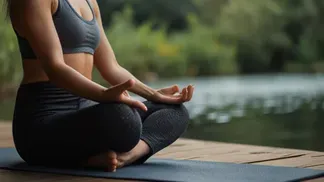
This heightened awareness allows individuals to make more precise adjustments in posture and movements, thereby improving overall stability. Yoga also promotes joint mobility and musculoskeletal alignment through various stretches and poses, reducing the risk of falls or injuries.
Another aspect of how yoga enhances stability is by fostering mindfulness and concentration. The mind-body connection cultivated during yoga practice encourages practitioners to focus on the present moment, coordinating breath with movement.
By developing mental clarity and focus on alignment while holding poses like Chair Pose or Warrior II, individuals enhance their ability to stay steady both physically and mentally.
The meditative aspect of yoga further supports emotional resilience and calmness, contributing to a sense of steadiness within oneself that extends beyond the mat.
How Long Does It Take To See The Benefits Of Yoga?
The timing for experiencing the benefits of yoga can vary from person to person based on factors like consistency, intensity, body type, and individual goals. However, many practitioners report noticeable changes in as little as a few weeks.
Those focusing on improving flexibility may start feeling less tension in their muscles and increased range of motion relatively quickly. Enhanced stability and balance might also manifest within a similar timeframe for those dedicated to their practice.
For beginners, committing to a regular practice schedule of at least 3-4 sessions per week can expedite progress with noticeable improvements in strength and flexibility within the first month.
The key lies not only in how often you practice but also in how mindfully you approach each session. Incorporating various poses that target different muscle groups and actively engaging in proper alignment during postures can speed up the journey towards reaping the benefits of yoga.
Moreover, participants attending longer yoga sessions or delving into styles like Ashtanga or Vinyasa that emphasize flowing movement sequences combined with breath work may witness accelerated results compared to shorter practices.
An extended 60-90 minute session offers more time to deepen stretches, focus on muscular engagement, and cultivate mindfulness – essential elements contributing to faster progress toward increased flexibility and stability in yoga.
Ultimately, by staying patient, persistent, and embracing the transformative potential of yoga beyond physical changes, individuals are likely to unlock its full magic over time.
How Long Does It Take To Unlock Flexibility?
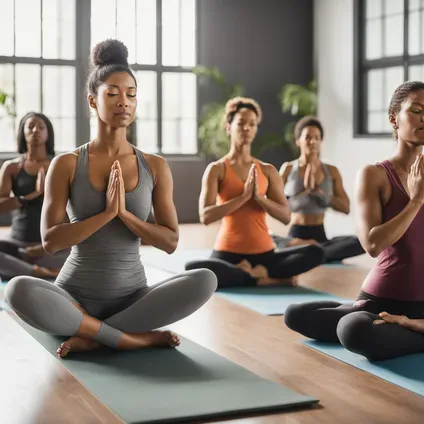
Unlocking flexibility through yoga is a journey that varies from person to person. The time it takes to achieve increased flexibility depends on factors such as consistency, body type, dedication, and individual goals.
For some individuals, noticeable improvements in flexibility can be seen within a few weeks of regular practice, while for others, it may take months of dedicated effort. It's important to approach the practice with patience and a focus on gradual progress rather than immediate results.
To unlock flexibility effectively, one must commit to a regular yoga routine that includes a variety of poses targeting different muscle groups. Consistency is key in allowing the body to adapt and become more flexible over time.
By incorporating dynamic and static stretches into your practice, you can work on lengthening and releasing tension in tight muscles gradually. Additionally, focusing on proper alignment and engaging the core can help support flexibility by creating stability in poses.
The process of unlocking flexibility goes beyond physical changes; it also involves mental openness and mindfulness. Embracing self-awareness during your practice can help you tune into how your body responds to different poses and cues for adjustment.
By listening to your body's signals and respecting its limits while gently pushing boundaries, you can cultivate a deeper level of flexibility without risking injury or strain.
Remember that every individual's journey towards increased flexibility is unique, and it's essential to honour your own pace while staying committed to the process for long-term growth in your practice.
How Long Should A Yoga Session Be?
The ideal duration for a yoga session varies depending on individual preferences, goals, and schedule constraints. Generally, a standard yoga class at a studio or gym typically lasts around 60 to 90 minutes. This timeframe allows for a balanced practice encompassing warm-up stretches, dynamic poses, relaxation postures, and mindfulness exercises.
However, it's important to remember that even shorter sessions can bring immense benefits. If time is limited, a focused 30-minute practice can still provide an opportunity to centre yourself, stretch muscles, enhance flexibility, and cultivate mental clarity.
Moreover, integrating short and frequent mini-sessions throughout the day can be advantageous in maintaining consistency and maximizing flexibility gains. These bite-sized practices could include a few minutes of mindful breathing or gentle stretching during work breaks or before bedtime.
The key is not just the length of the session but the quality of your engagement with each posture and breath – prioritizing mindfulness over duration can lead to significant improvements in both physical flexibility and mental resilience.
For those with packed schedules or beginners easing into a routine, starting with shorter sessions can help develop a sustainable habit while gradually building up stamina and flexibility.
As you progress in your practice and feel more comfortable with the poses, you might find enjoyment in longer sessions as well.
The key is to listen to your body's needs and find what works best for you – whether it's a daily 15-minute morning flow or an immersive weekly two-hour class – consistency paired with attentiveness will lead to transformative growth in both flexibility and stability in your yoga journey.
How Many Times A Week Should I Do Yoga For Flexibility?
When aiming to enhance flexibility through yoga, consistency is key. Ideally, practicing yoga for flexibility should be done at least 3-5 times a week to see noticeable improvements.
However, the frequency can vary depending on individual goals and schedules. Those looking for a more gradual approach or just starting may find benefit in practising 2-3 times a week initially before increasing frequency.
The regularity of your practice plays a significant role in how quickly you progress in terms of flexibility. It’s not just about the duration of each session but also about how often you expose your body to the movements and stretches that promote flexibility.
Consistent practice helps build muscle memory and gradually unlocks tight areas, leading to an increased range of motion over time.
Additionally, incorporating a mix of different types of yoga practices into your weekly routine can further support flexibility gains.
For example, balance-focused practices like Hatha or alignment-based styles such as Iyengar Yoga can complement more dynamic forms like Vinyasa or Ashtanga, offering a well-rounded approach to both strength and mobility development.
Ultimately, finding a sustainable schedule that works for you and allows room for growth while avoiding burnout is crucial in reaping the rewards of improved flexibility through yoga.
How Quickly Does Yoga Improve Flexibility?
The timeline for experiencing improved flexibility through yoga varies from person to person based on individual factors such as dedication, consistency, body type, and existing level of flexibility.
Generally, those who practice yoga regularly and with a focus on increasing flexibility may start noticing improvements in their range of motion within a few weeks to a couple of months.
However, significant progress in flexibility often comes with consistent practice over longer periods.
For individuals starting yoga with limited flexibility, the initial phase may involve building strength before deepening stretches. Over time, as muscles become more conditioned and accustomed to various poses and movements, the body gradually adapts by increasing flexibility.
It is essential to approach the journey towards improved flexibility in yoga with patience and mindfulness, allowing the practice to unfold naturally rather than rushing the process for quick results.
In essence, while some practitioners might witness noticeable changes in their flexibility relatively quickly, others may require more time and perseverance. The key lies in maintaining a regular yoga routine that incorporates poses aimed at stretching and strengthening different muscle groups systematically.
By listening attentively to your body's signals, and respecting its limitations while gently pushing boundaries within reason, you can embark on a transformative journey where increased flexibility becomes an organic outcome of your dedicated yoga practice.
Embracing the Transformative Magic of Muscular Engagement in Yoga
In the realm of yoga, Ashtanga and Vinyasa styles stand out as excellent choices for enhancing flexibility. These dynamic practices emphasize flowing movements linked with breath, aiding in elongating muscles and improving range of motion over time.
By consistently engaging in these forms of yoga, practitioners can gradually unlock tightened areas and experience a newfound sense of suppleness in both body and mind.
As we journey through our yoga practice, it becomes clear that true growth lies not only in achieving physical prowess but also in fostering inner strength and stability. By understanding the vital connection between muscle engagement, increased flexibility, and enhanced stability, yogis can tap into the transformative power that yoga offers.
Through dedication to mindful practice and a commitment to nurturing both flexibility and stability, individuals can unlock the magic within themselves – leading to a profound evolution on and off the mat.
People Also Asked
1. What is the best yoga pose for flexibility?
Answer: One of the best yoga poses for flexibility is the Downward-Facing Dog (Adho Mukha Svanasana). It stretches the hamstrings, calves, shoulders, and hands, helping to increase overall flexibility in the body.
2. Which yoga style is best for strength and flexibility?
Answer: Vinyasa and Ashtanga yoga styles are excellent for building both strength and flexibility. These dynamic practices involve flowing sequences that challenge various muscle groups and enhance the range of motion.
3. Can yoga increase flexibility?
Answer: Yes, yoga can significantly increase flexibility. Through consistent practice of various poses and stretches, muscles and joints become more supple and the range of motion improves.
4. Is it true that yoga builds strength and improves flexibility?
Answer: Yes, yoga builds strength and improves flexibility simultaneously. Many poses require muscle engagement and holding postures, which strengthens muscles while enhancing flexibility through stretching.
5. What is the most powerful form of yoga?
Answer: The most powerful form of yoga depends on individual goals and preferences. Ashtanga and Power Yoga are often considered powerful due to their physically demanding sequences that build strength, flexibility, and endurance.
6. What type of yoga is used to establish flexibility and balance?
Answer: Hatha Yoga is particularly effective for establishing flexibility and balance. It focuses on holding poses for extended periods, allowing deep stretches and improving balance through mindful practice.
7. What is the most powerful yoga pose?
Answer: The Plank Pose (Phalakasana) is considered one of the most powerful yoga poses. It strengthens the core, arms, and legs while also improving balance and stability.
8. Which yoga pose has the most benefits?
Answer: The Warrior II Pose (Virabhadrasana II) is highly beneficial as it strengthens the legs, opens the hips, and improves focus and stamina. It also stretches the chest and lungs, promoting better breathing.
9. What is the hardest pose in yoga?
Answer: The Handstand (Adho Mukha Vrksasana) is often regarded as one of the hardest yoga poses. It requires significant upper body strength, balance, and core stability.
10. How often should I practice yoga to see improvements in flexibility?
Answer: To see noticeable improvements in flexibility, it's recommended to practice yoga at least 3-5 times a week. Consistent practice helps to build muscle memory and gradually increases the range of motion.
